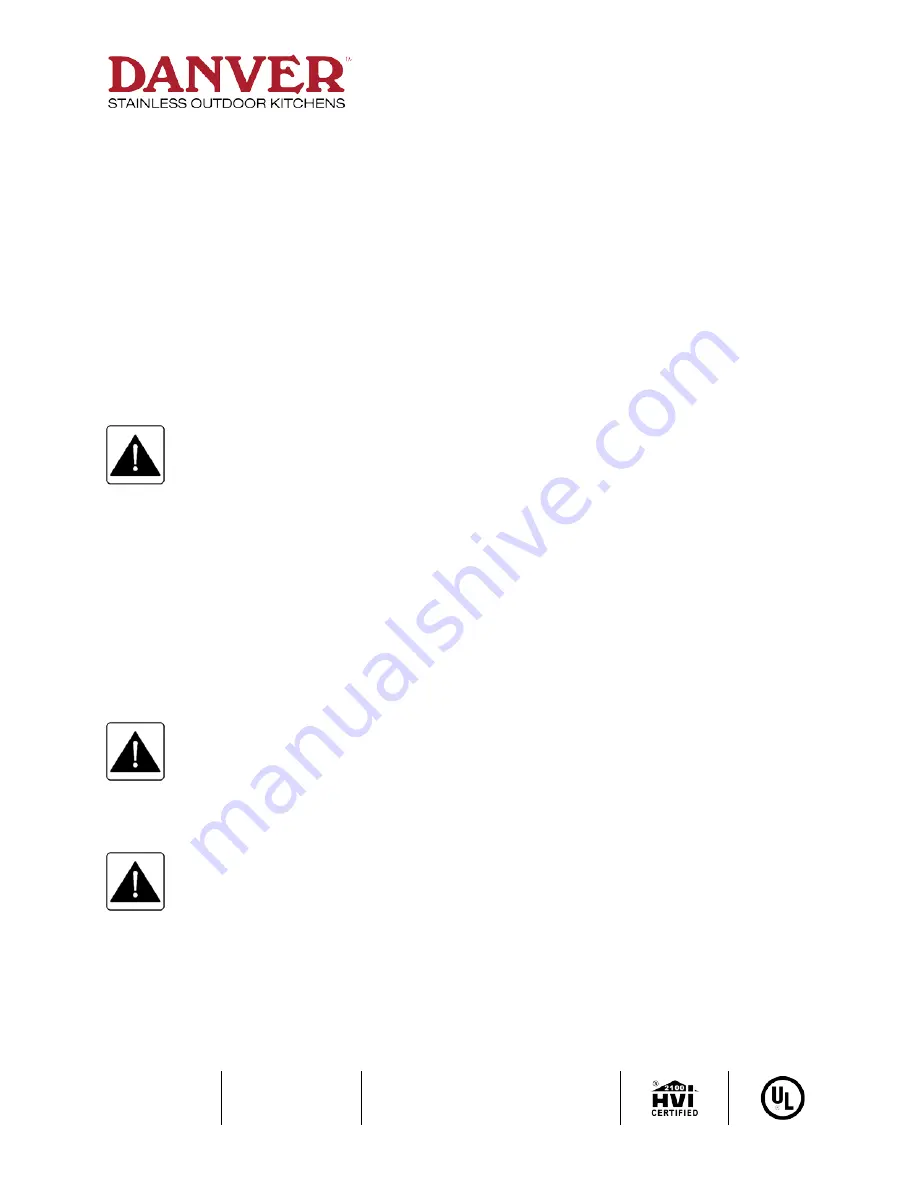
Item #
OBL-00-008
Rev. 10-2017
Copyright ©2017 Danver, Inc.
INSTALLATION INSTRUCTIONS
PART 1: Planning the Installation
CAUTION:
1.
For general ventilating use only. Do not use to exhaust hazardous or explosive materials
and vapors.
2.
To reduce the risk of fire and to properly exhaust air, the hood must be exhausted to
outside air. Never exhaust into a wall, an attic or a concealed area in the building. This
can create a potential hazard.
3.
Consult a licensed ventilation contractor or qualified technician for proper installation of
exhaust ducting.
Code requirements must be observed whenever outdoor built-in gas appliances are installed.
Consult with local codes and ordinances regarding the application of your covered, outdoor
ventilation hood.
4.
Locate the cooking area for minimum cross drafts, when possible.
5.
Ducts must be of adequate size and duct runs should be as short as possible. Where turns
are necessary, keep turning radius as large and as smooth as possible.
6.
The ducting must be air tight. Use a minimum of 2 sheet metal screws at every duct joint.
Then, seal the duct joints with high quality duct tape.
7.
Only use ductwork constructed of materials deemed acceptable by state, municipal and
local codes.
8.
Plan the installation so that all minimum clearances are met or exceeded. Dimensions
shown provide minimum clearances, unless otherwise specified.
IMPORTANT:
If the DANVER® DOHC Series Range Hood is installed as a liner for a wood hood,
proper installation of the hood as a liner is directly related to the material from which the
custom canopy is constructed. You must provide structural framing and tight backing in the
areas in which you are securing the hood inside your custom canopy. Failure to do so could
distort and damage the hood and void the warranty.
WARNING!
Following Are Manufacturer’s Suggestions. Always Observe Local Building Codes.
Hoods installed in custom canopies constructed of combustible materials should be installed
with the combustible material structure a minimum of 36” above the cooking surface. Hoods
installed in custom canopies constructed of non-combustible materials, should be installed
with the non-combustible material structure a minimum of 30” above the cooking surface.
Follow all instructions regarding minimum safe clearances and installation location. Failure to
do so may result in a safety hazard or fire. To reduce the risk of fire use only metal ductwork.






























